Best management practices for recovering escaped or released farmed deer or elk
Learn how to recover escaped farmed deer or elk. This technical information is for commercial deer and elk producers in Ontario.
ISSN 1198-712X, Published September 2022
Introduction
Statistics Canada estimates that in 2016, there were 1,047 elk and 2,533 deer on 97 operations in Ontario. Not all of these operations are farms.
A substantial number of non-farm operations, such as zoos, animal exhibits, petting zoos and private animal collectors also keep deer and elk.
Cervids currently raised in Ontario include:
- elk
- red deer
- elk-red deer hybrids
- white-tailed deer
- fallow deer
- sika deer
- mule deer
- reindeer
For practical purposes, the term "deer" is used in this fact sheet to refer to all species of Cervidae farmed in Ontario.
It is obviously in the farmers' best interest to protect their investment by ensuring their deer remain on the farm premises. Escaped animals may endanger the public, private or public property, their own wellbeing and native wildlife.
Despite the best-possible management practices and proper fencing and handling facilities, there is always the risk of deer escaping from farm premises. The purpose of this fact sheet is to provide deer farmers with some practical suggestions for recovering the escaped animals.
Responsibilities
All deer owners - farmers and non-farmers - have legislative responsibilities for reporting escapes and releases and also for recovering their deer, under the Fish and Wildlife Conservation Act, 1997, which is administered by the Ministry of Natural Resources (MNR). These responsibilities are outlined in Recovery Protocol for Escaped or Released Farmed Deer and Elk, produced by the MNR, the Ontario Ministry of Agriculture, Food and Rural Affairs, the Ontario Deer and Elk Farmers Association and the Canadian Food Inspection Agency.
Recovery plan
Although in many instances escaped deer will eventually return, following a recovery plan for escaped deer that has been prepared ahead of time should maximize the chances of a successful and timely recovery.
Identify appropriate "recovery paddock(s)" along perimeter fences. The more recovery paddocks there are, the better the chances of recovering escaped deer. Open the gates or cut openings in the perimeter fence of the recovery paddocks to provide the deer with easily accessed points of entry. More than one opening per paddock may increase the chances of the escaped deer entering, should it (they) return, although this also provides the animal(s) with multiple exits.
Recovery paddock designs



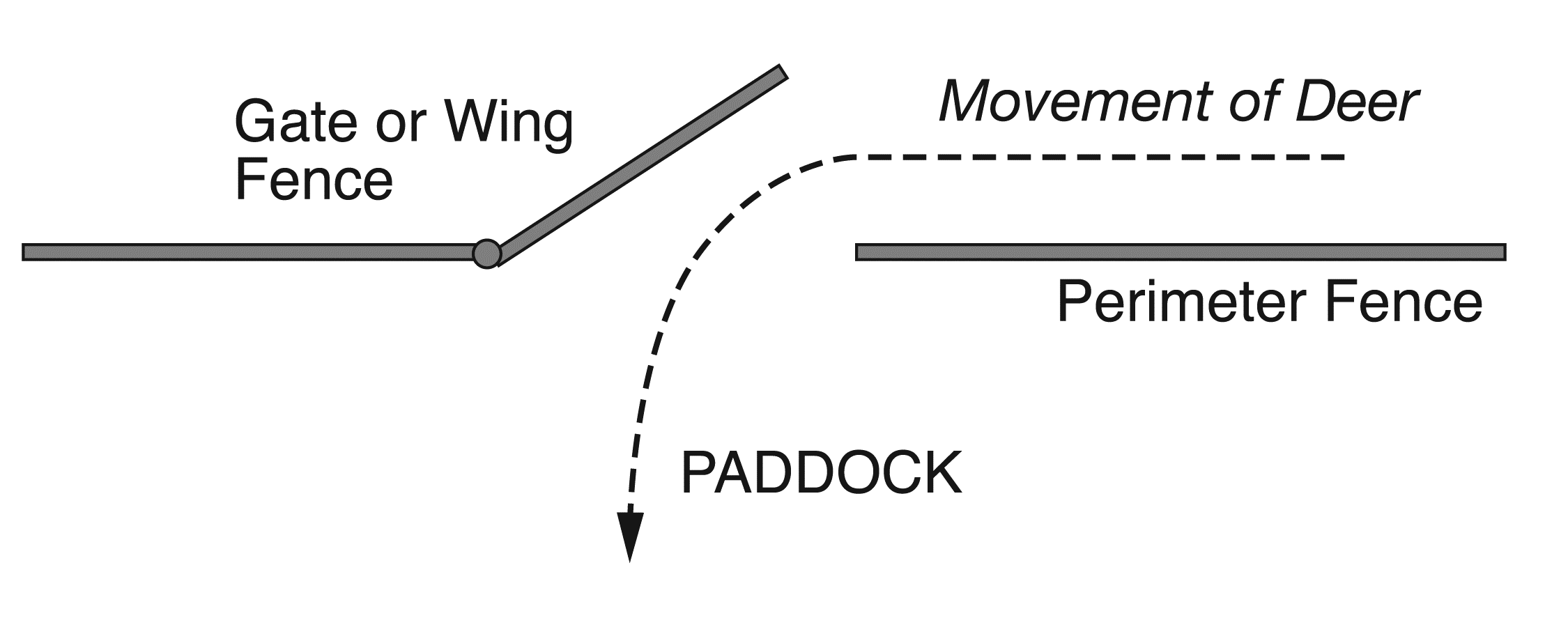
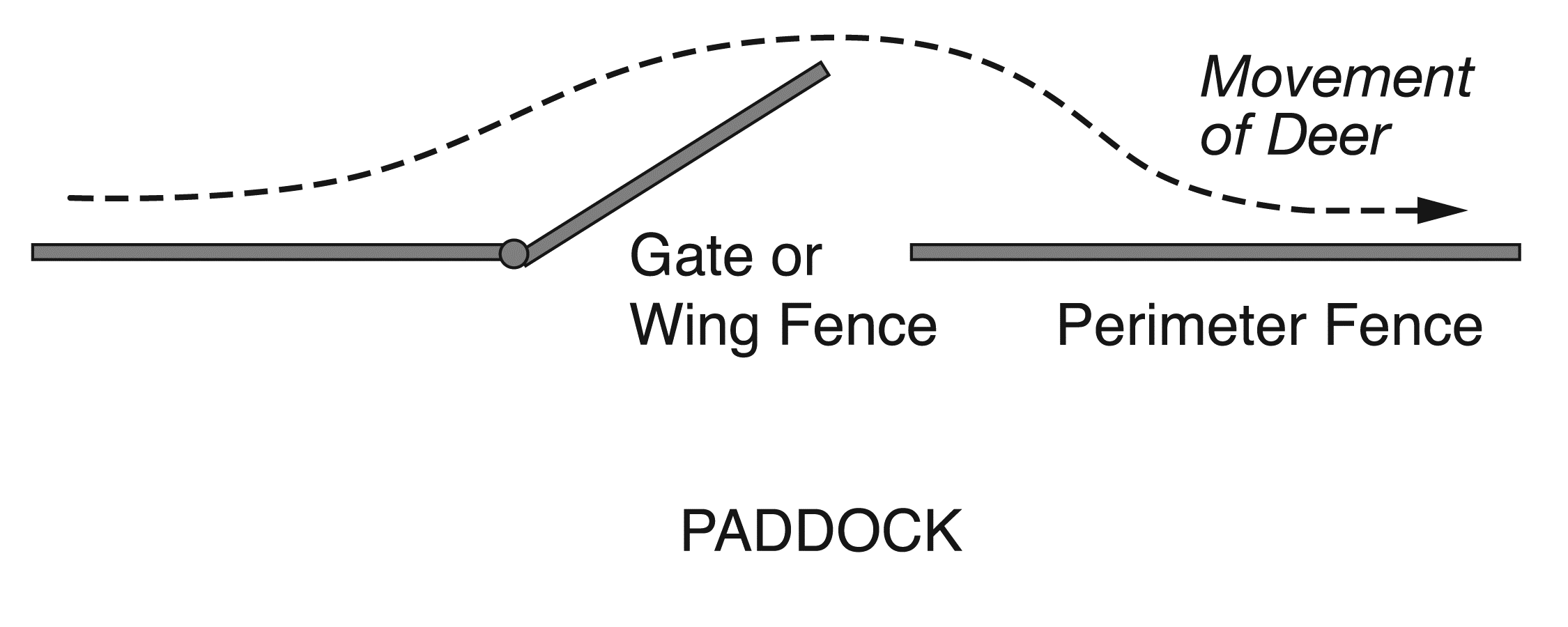

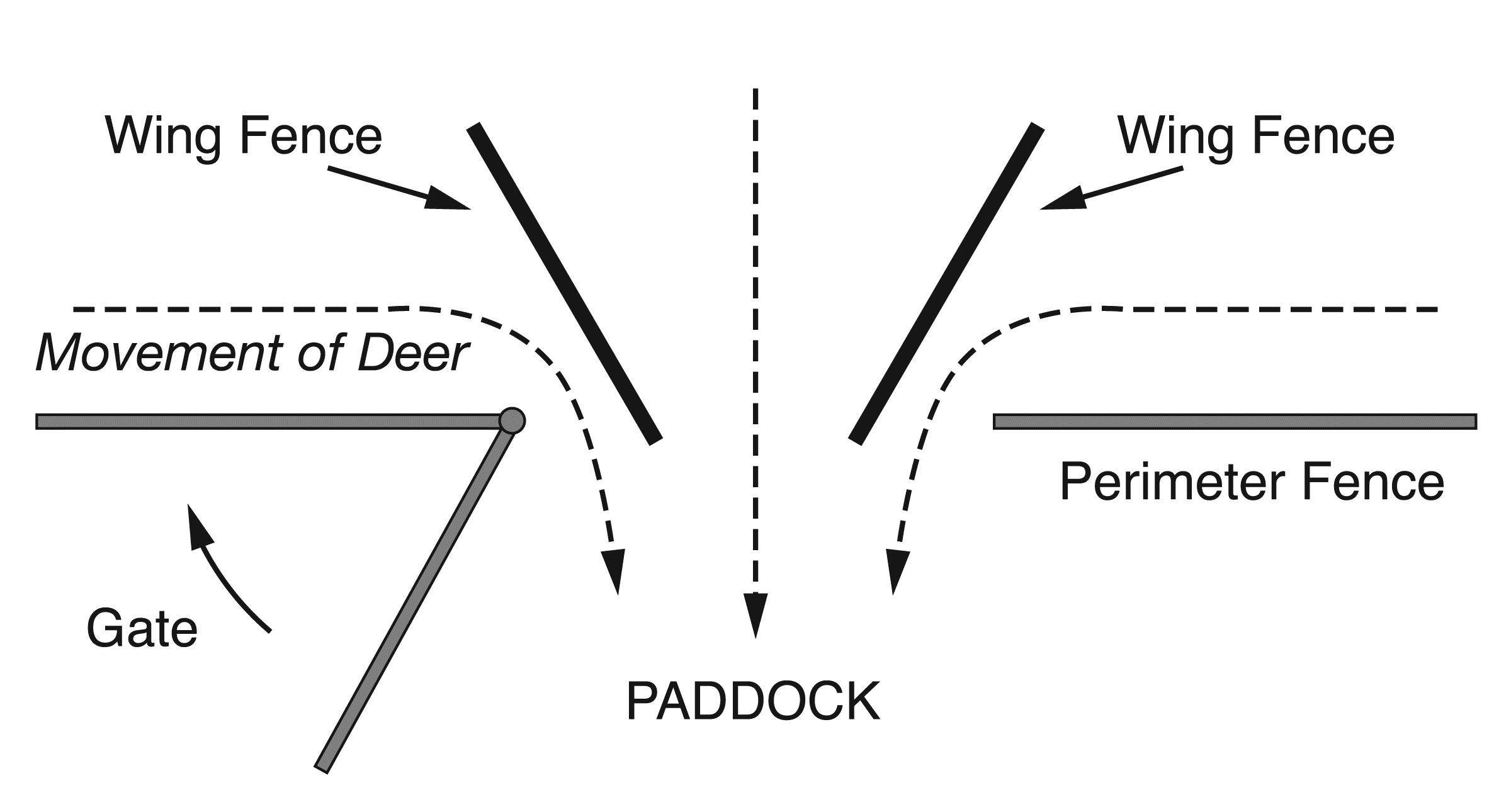
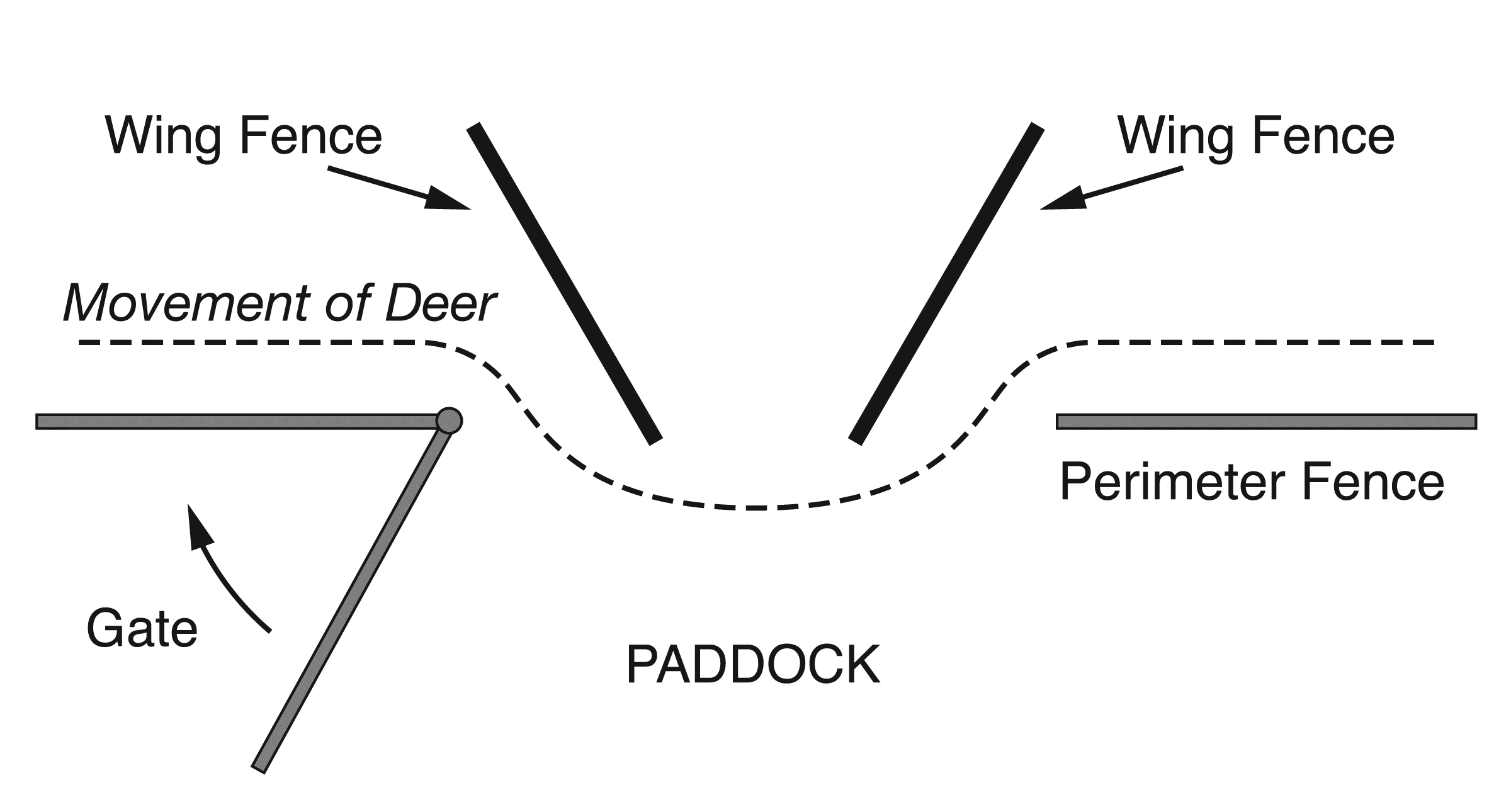
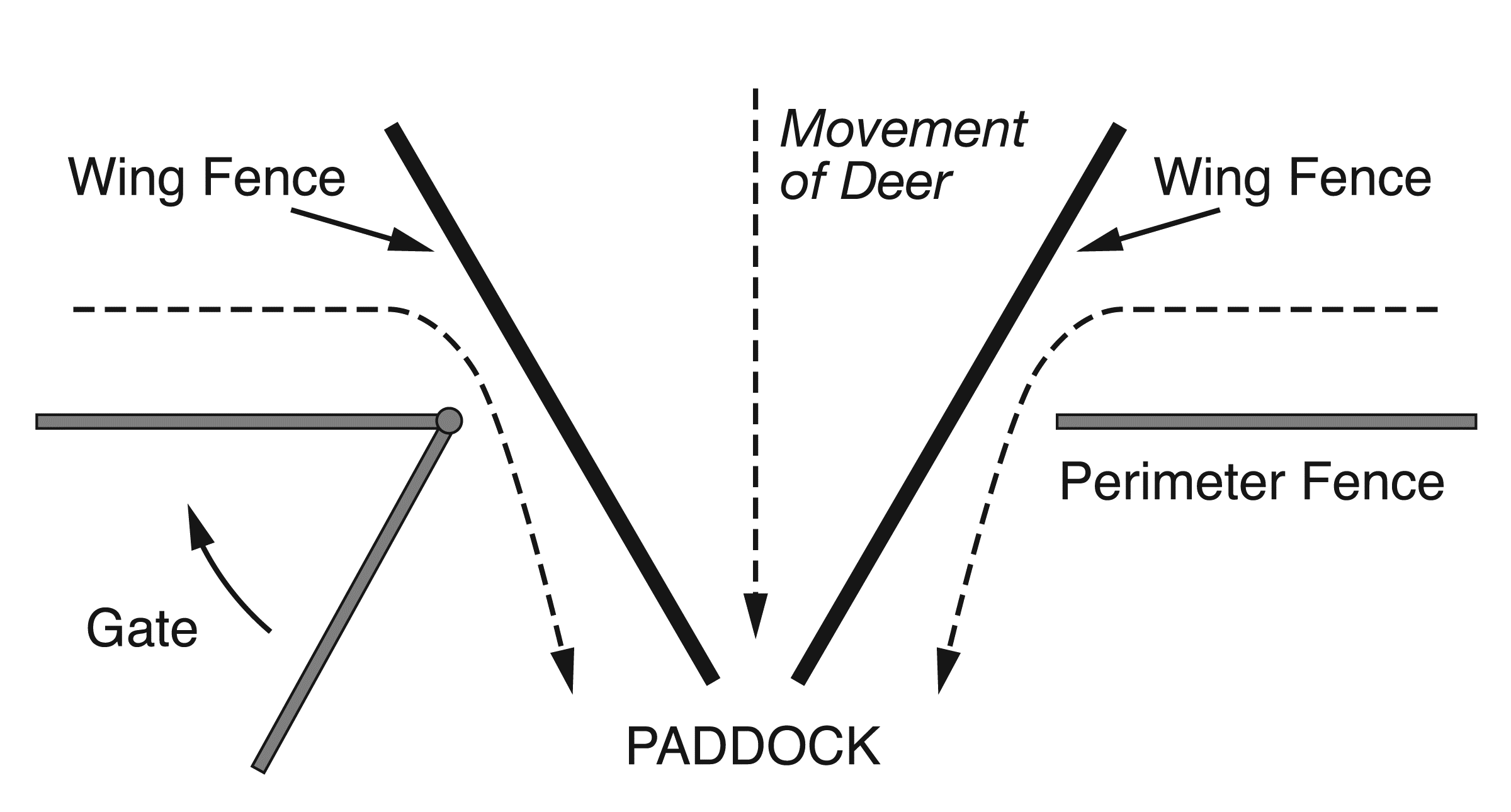
Best management practices to include in a recovery plan
To increase the chances of recovering escaped deer, implement the following management practices in your plan:
- Leave a trail of feed (such as grain or hay) to lure animals towards the opening in the perimeter fence or to try to get them to settle in a particular area. Be sure to use the vehicle normally used for feeding so the deer will be accustomed to the sound, which may entice them back or at least keep them in the vicinity.
- Locate other deer in paddocks next to the recovery paddocks to aid in luring escaped animals back. This may be especially effective during rut season.
- Check the recovery paddocks frequently during the day and night.
Best management practices during recovery
- Immediately notify the local district office of the MNR to report the escape and initiate development of a strategy for the animals’ recovery.
- Minimize the number of people (especially strangers) involved in recovery efforts, to reduce the chances of spooking and subsequently scattering the animals. A round-up is not an effective means of recovering deer.
- Ensure that anyone helping in the recovery efforts wears normal farm clothes that the escaped animals are used to.
- Inform neighbours about the loose animals and ask them to contact you immediately should they sight the animal(s). Depending on the circumstances, it may also be advisable to contact:
- Ministry of Transportation, local township or municipality - where there are traffic concerns
- police - where there are serious traffic and public safety concerns
- Canadian Food Inspection Agency
- farm veterinarian - in case the animals are injured or need tranquilizing
- insurance agent
- Keep your dog(s) inside and ask your neighbours to do the same.
- Consider the use of tranquilizers and dart guns where there are only a few deer out. In larger groups of deer, the dart guns may only serve to scatter the non-tranquilized deer. Prescription drugs such as tranquilizers, analgesics or sedatives must be obtained through a veterinarian and will only be provided where there is an established “vet-client-patient relationship.” Persons should be knowledgeable, trained and experienced in the use of tranquilizers.
- Do not use oral tranquilizers via feed, as it is difficult to restrict consumption specifically to the target animals. This could pose risks to humans, pets, other livestock and wildlife.
- Under certain circumstances where recovery efforts have been unsuccessful or where there are higher risks associated with the escape, it may be necessary to harvest the animal(s). All individuals involved in such controlled culls should be trained and experienced in the use of firearms.
Preventive measures
The aforementioned tips may help in the successful recovery of escaped deer; however, many escapes can be avoided by implementing the following preventive measures, which are described in more detail in the OMAFRA fact sheet Fencing for deer and elk.
- Use fencing specifically designed for deer.
- Fence off ditches, creeks and rivers. Avoid fencing over watercourses, as ice jams associated with spring thaws can destroy even the best constructed fences.
- Incorporate external gates in all paddocks abutting the perimeter fence to facilitate recovery.
- Ensure all external gates are locked at all times.
- Locate handling facilities inside the perimeter fence, so that in the event of an escape, the animal will remain within the perimeter fence.
- Incorporate a pass-through with double gates at the main entry to allow easy, yet secure, access for trucks, tractors and other farm equipment. When vehicles are entering or leaving the farm, one of the two gates should always be secured.
- Inspect fences regularly to block holes, repair and maintain fences as required and remove broken or unhealthy trees or branches to prevent them from falling on the fence.
- Use electric wire close to the ground on the outside of the perimeter fence to discourage predators from digging under the fence.
- Remove excess snow build-up along all perimeter fences.
Sample farm layouts are available from the Canadian Food Inspection Agency in the Biosecurity for Canadian Cervid Farms Producer Planning Guide appendix 3: sample cervid farm layouts.
This factsheet was originally written by Brian Tapscott, Alternative Livestock Specialist, Elora, OMAFRA.